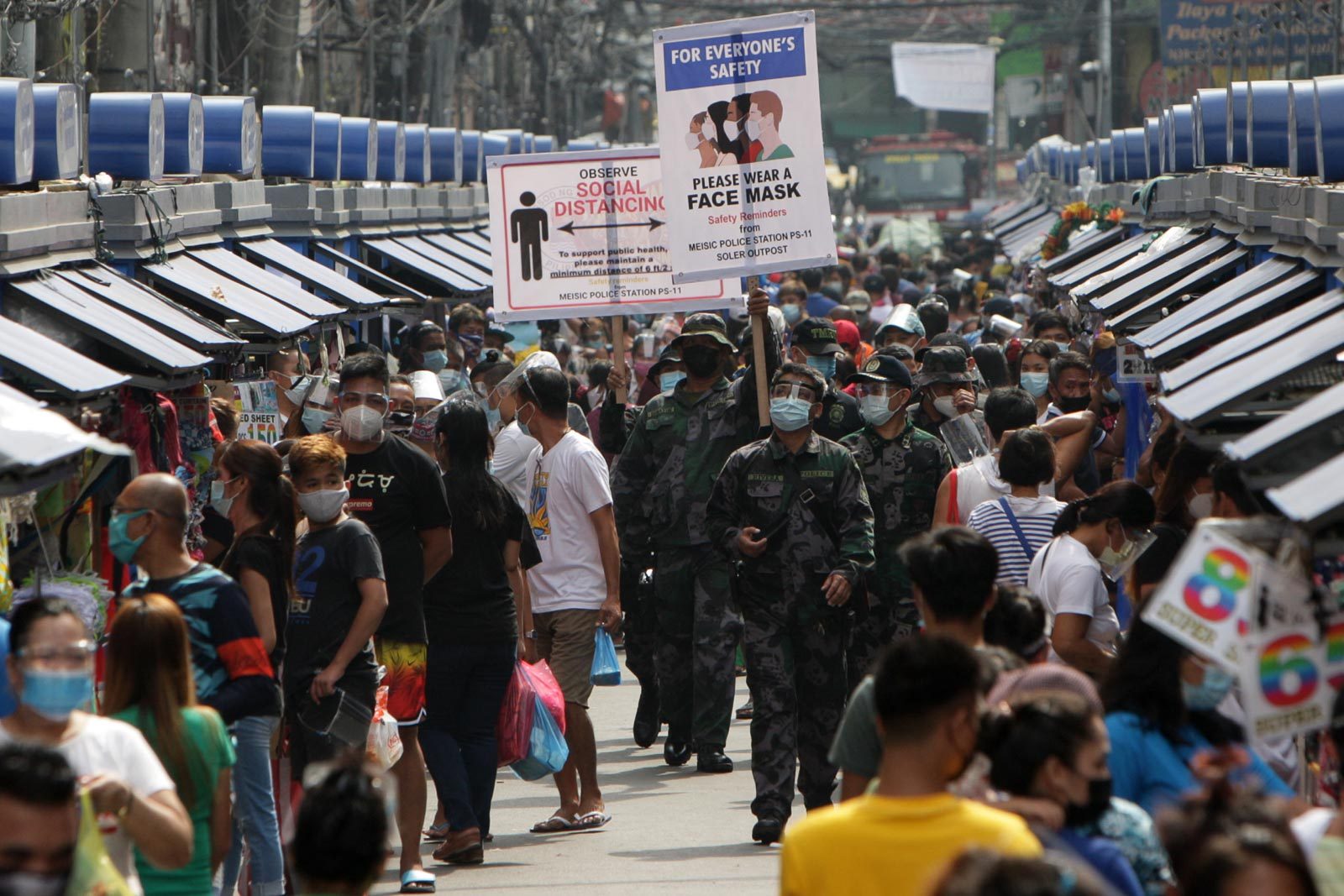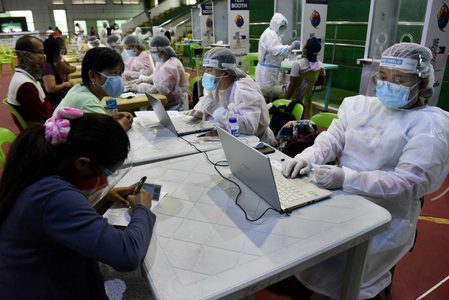SUMMARY
This is AI generated summarization, which may have errors. For context, always refer to the full article.

There’s one more thing the Duterte government’s coronavirus task force would need to consider when it decides on whether to shift Metro Manila to the loosest form of community quarantine in the country starting March: vaccinating more Filipinos.
Dr Anna Ong-Lim, professor and division chief of infectious and tropical disease at the Department of Pediatrics in the University of the Philippines (UP) College of Medicine, raised the possibility in an interview with Rappler, saying more Filipinos will need to be vaccinated if infections rise as a result of shifting Metro Manila – the epicenter of the country’s pandemic – to the least strict modified general community quarantine (MGCQ).
Ong-Lim said it boiled down to a concept medical experts called “herd immunity threshold” – or the proportion of a population that needs to be immune in order to achieve herd immunity.
“Because the loosening of these restrictions will tend to generate more movement and conceptually more infections, will it then necessarily mean that we will need to vaccinate more people to achieve the same level of protection? The answer is yes,” Ong-Lim said.
Voting 9-8, Metro Manila mayors agreed to recommend to the national government that the capital region be placed under MGCQ by March.
The decision came after the National Economic and Development Authority’s (NEDA) recommendation to the President that the entire country be placed under MGCQ by March, and that COVID-19 cases be dealt with on a local level. President Rodrigo Duterte said he was studying the proposal of NEDA.
Difficult targets
Health officials were currently targeting to vaccinate at least 50 to 70 million Filipinos by the end of 2021 – just enough to reach the recommended 60% to 70% of the population scientists estimated was needed to reach herd immunity against COVID-19.
But Ong-Lim explained reaching the recommended 60% to 70% of a population is dependent on the reproduction number (Ro), or the number of people one positive case can infect.
For COVID-19, scientists have computed that one infected individual may infect an average of 2.5 to 3 people, which means about 70% of a population needs to be vaccinated to reach herd immunity. That computation is based on the natural behavior of the virus.
But what we know by now is that the reproduction number for COVID-19 can also be modified through measures like mask wearing, physical distancing, and other quarantine restrictions that vary per community quarantine level. If countries can manage to modify and lower the disease’s Ro in their areas, then the threshold of people who need to be vaccinated before reaching herd immunity will also decrease.
In the same way, Ong-Lim explained that if the the reproduction number and infections increase, “then you will have to target a higher immunity threshold. You’re going to have to vaccinate a greater proportion of the population to get the level of protection you need.”
Experts studying the coronavirus outbreak in Metro Manila warned that COVID-19 cases in virus epicenter Metro Manila could reach 2,400 per day should the government place it under the least strict quarantine mode.
For the Philippines, this means possibly having to vaccinate even more than 50 to 70 million if the country is to achieve its goal of attaining herd immunity.
The target would be difficult to achieve, considering the government has yet to start rolling out vaccines. On top of this, the Philippines has likewise not been able to close a binding supply agreement that would determine a specific date when doses would be delivered to the country.
Ready for risks?
All this brings us to the question task force officials will debate on: should Metro Manila transition to MGCQ?
While some may argue in favor of waiting for vaccines, Ong-Lim pointed out that task force and local officials will also need to consider how well health protocols can be implemented in their communities.
The decision to shift Metro Manila to MGCQ brings the national government, local officials, the health sector, and individuals back to the same challenge it has met since day one of the pandemic: ensuring adequate contact tracing, enough isolation facilities, safe public transportation, and safe workplaces, among others.
Filipinos are already familiar with a near worst-case scenario when the country eased its quarantine restrictions in July to August of 2020. Doctors warned the healthcare system was “nearly overwhelmed” due to the spike in cases, prompting them to call for a “timeout” as they urged the government to revert Metro Manila to stricter quarantine measures.
The Octa research team took note of this in its latest report on February 17, saying:
“While we recognize and support the need to jumpstart the economy and create livelihood for our citizens, at this time, the proposal to shift the NCR to MGCQ by March 2021 amidst the backdrop of a more contagious and lethal UK variant spreading in the regions is not just risky but also contrary to sensible epidemic management.”
Health and economic officials have long recognized the need to rebalance the reopening of the economy. But health experts stressed this could only be sustained if the government and public prepared for all the risks that could come with a possible surge in cases.
“Allow people to be able to open up to economy but make sure to give them the tools to protect themselves,” Ong-Lim said.
She added in Filipino, “It’s not enough to say that if we don’t open up, the economy will collapse. We all know that. So what are we going to do so we can open up, so we’re ready in case there is a surge? Not only say there’s 1,000 beds in a hospital, because that’s the end of the line when people are already sick.
“We do not want people to get sick.” – Rappler.com
Add a comment
How does this make you feel?

There are no comments yet. Add your comment to start the conversation.